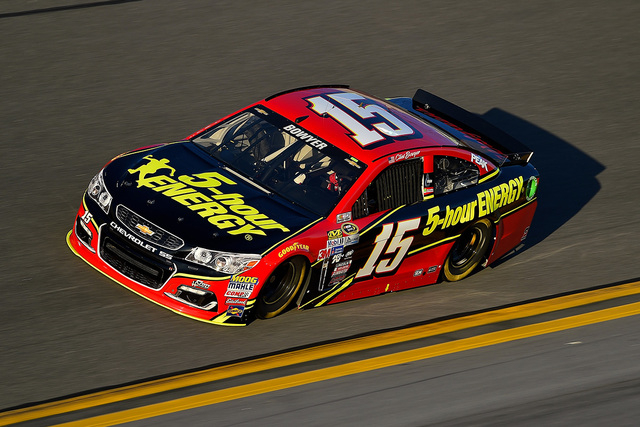NASCAR makes a few changes for this season
Stick around a little while. It’ll change.
People in Chicago used to say that about the weather there. Now people in auto racing mostly say that about NASCAR.
Once again there are significant changes to consider in the Sprint Cup series as the gentlemen and Danica Patrick start their engines in 2016. Here are a few on which to train binoculars:
■ Daytona rising: A reboot at the iconic track that hosted the Daytona 500 was completed in time for the NASCAR Super Bowl in February. The $400 million “reimagining” of the speed emporium, featuring a state-of-the-art stadium and spectator “injectors” to transport fans to and from their seats, opened to mostly rave reviews. Mostly.
“I’ve heard some pretty impressive things … (but) the garage is still a horrible layout,” said 2008 Daytona 500 winner Ryan Newman.
■ Driver shuffle: A handful of car-driver combinations changed during the short off-season. Brian Scott will drive the No. 9 Ford for Richard Petty Motorsports; Clint Bowyer will wheel the No. 15 Chevy for HScott Motorsports; Chase Elliott, son of NASCAR icon Bill Elliott, will take Jeff Gordon’s place in the No. 24 Chevy at Hendrick Motorsports; Chris Buescher will take a turn in the No. 34 Ford for Front Row Motorsports.
Plus, the transcendent Wood Brothers are planning to run a full season for the first time since 2008, with youngster Ryan Blaney hitching up the safety belts.
■ Franchise system: To provide additional value for car owners — and perhaps to make stock car racing more like pro football and the other so-called “stick-and-ball” sports — NASCAR granted franchises that will assure 36 cars of starting spots and a bigger piece of the Sprint Cup pie. Fields also will be limited to 40 cars (instead of 43), leaving non-franchise holders only four starting spots for which to compete.
The franchises, limited to three per team, are good for nine years. Car owners are allowed to sell or lease them out, giving them a little more bang for their startup bucks should they decide to get out.
■ (Another) new rules package: This one will remove downforce from the cars at all tracks except the superspeedways at Daytona and Talladega.
In theory, the new specs will make the cars more difficult to drive, which should put more emphasis on driver skill — especially at 1.5-mile tracks such as Las Vegas Motor Speedway. More driver emphasis usually means more competitive racing and fewer aerodynamic snoozers in which one or two cars pull away from the pack.
■ NASCAR overtime: It used to be called green-white-checkered, but perhaps Sprint Cup is aiming to become more like the NBA, too.
The end-of-the-race system has been massaged for 2016, with each track featuring an “overtime line,” the location of which will vary. After the green flag is displayed in an overtime situation, the leader must pass the overtime line before a yellow flag comes out and a clean restart can be declared. If the yellow comes out after the leader passes the overtime line, the race is over. Otherwise, the cars will pack up and try again.
The previous rule of three attempts at a green-white-checkered restart has been abolished. So in theory, the “boys can have it” for four or five or more overtime restarts, provided they have enough fuel. And provided the racetrack has lights.
Las Vegas Review-Journal sports columnist Ron Kantowski can be reached at rkantowski@reviewjournal.com or 702-383-0352. Follow him on Twitter: @ronkantowski

















